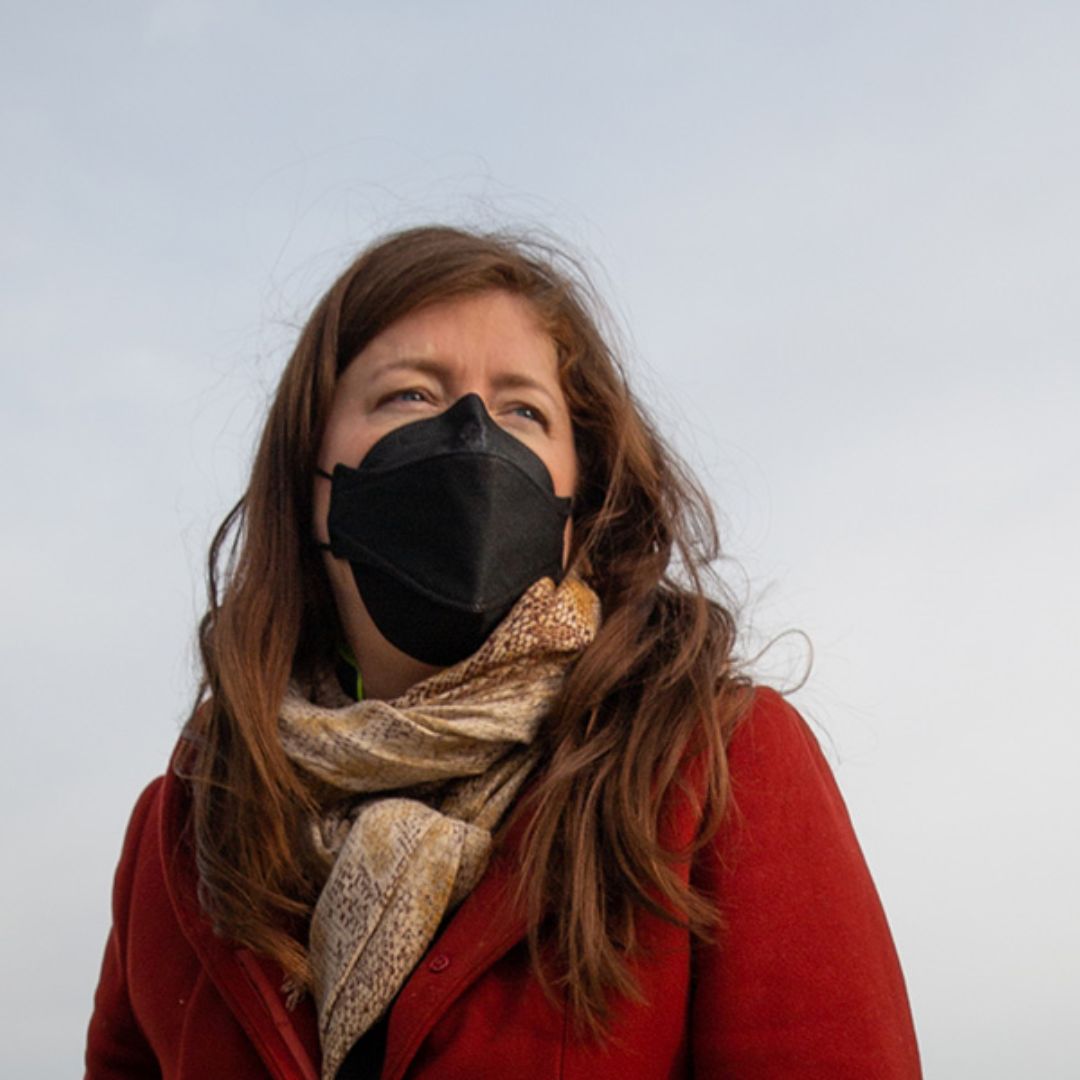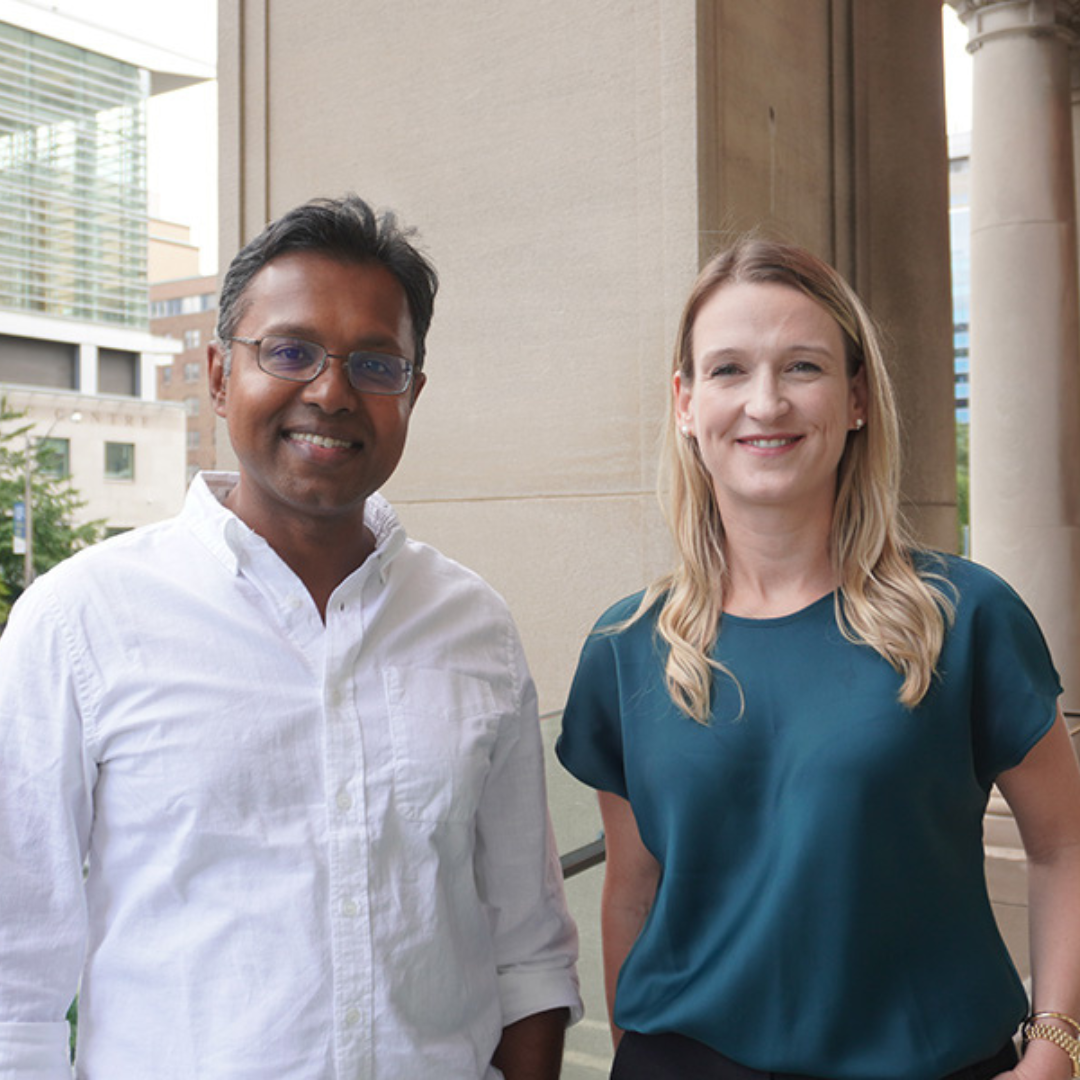Nurse Practitioner Nikki Marks began working with the Connected COVID Care team in mid-April and says patients are typically very relieved when told UHN clinicians are going to follow-up with them to monitor their symptoms. (Photo: UHN)
Sophie Martins was scared.
In early October, her 81-year-old father, Konstantinos (Gus) Kandelas, fainted and fell in his Toronto home, where he lives alone. Taken by paramedics to the Emergency Department (ED) at Toronto Western Hospital, the widower was diagnosed with cracked ribs – and COVID-19.
“It was terrifying,” recalls Sophie, her father’s only caregiver. “It was the fear of the unknown.
“There was a lot of anxiety because of everything you hear about older people and COVID.”
A few hours later, Gus, who had mild symptoms including a low-grade fever and a cough, was back home and under the watch of UHN’s Connected COVID Care pathway, an integrated care initiative that brings together dozens of multi-disciplinary members of TeamUHN to support patients with coronavirus at home.
Within 24 hours and continuing for the next two weeks, a UHN nurse practitioner (NP), with the help of someone from UHN Interpretation Services to translate Greek, monitored Gus’ condition virtually. A pulse oximeter to measure oxygen saturation in Gus’ blood, was sent to his house and a home care nurse made two visits to his home to check vital signs.
“It was a great relief to know he was well cared for and someone could go into his home,” Sophie says. “Dad was as cool as a cucumber. He said ‘if I die right now,’ I’d die happy,’ but he also knew that he was going to pull through.”
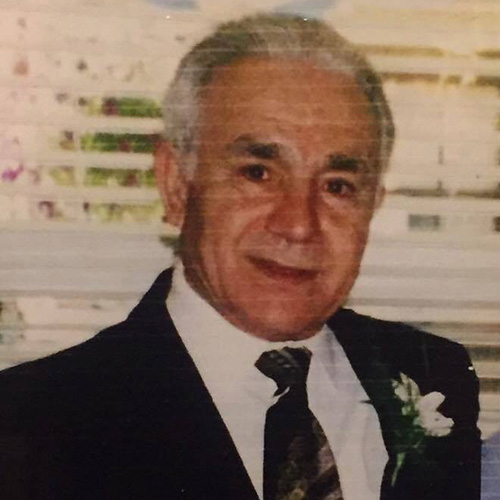
Konstantinos (Gus) Kandelas, 81, who lives alone, was part of the UHN Connected COVID Care pathway program as he recovered earlier this fall. (Photo: Courtesy Sophie Martins)
As a part of the Integrated Care at UHN Program, which was launched in June 2019, Connected COVID Care was developed in four weeks early in the pandemic. The idea is that patients who test positive – or are suspected to be positive – at UHN EDs, General Internal Medicine (GIM) units, Princess Margaret Cancer Centre and other UHN clinics or the Toronto Western COVID-19 Assessment Centre, can be monitored and cared for virtually, preventing unnecessary admission.
The goal is to give patients and families peace of mind, and ease the burden on the healthcare system.
“Most patients can and want to be cared for comfortably and safely at home,” says Melissa Chang, Senior Program Director, Integrated Care at UHN. “It was important that we design this pathway with patients – and many teams across UHN came together to create and continually evolve a program that puts the patient’s needs first.”
To date, the team has helped more than 10,000 patients and completed over 12,000 virtual visits. Conservatively, over the past six months, at least 370 unnecessary ED visits and a minimum of 150 inpatient bed days have been prevented.
The pathway has also been critical in identifying alternate diagnosis for patients and provided timely follow-up care including: pulmonary embolus, chronic obstructive pulmonary disease (COPD) and congestive heart failure exacerbations, and subarachnoid hemorrhage.
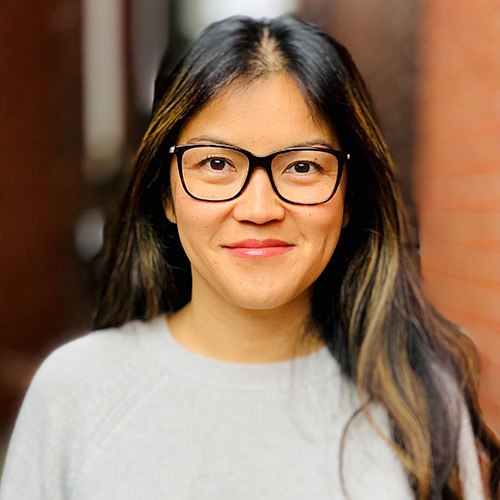
Melissa Chang, Senior Program Director, Integrated Care at UHN, says many teams “came together to create and continually evolve a program that puts the patient’s needs first. (Photo: Courtesy Melissa Chang)
“There’s so much confusion and anxiety for people when they’re told they’ve tested positive for COVID,” says Nikki Marks, NP for Connected COVID Care. She began working with the team in mid-April and was one of the clinicians who monitored Gus.
“The typical reaction to us telling them we’re going to follow-up and monitor their symptoms is relief,” says Nikki, who makes about a dozen calls a day to patients for this pathway, most having tested positive and considered complex due to age or underlying health conditions.
“This program has brought together so many different groups across so many different disciplines and used the strengths we all bring. The result has been ongoing improvements for patients and clinicians.”
Among the teams in UHN’s Connected COVID Care are:
One Care Team
- Approximately 60 active rostered clinicians, NPs and administrators
- Multi-disciplinary team: Emergency medicine, general internal medicine, cardiology, respirology, infectious disease, thoracic, family medicine, gastroenterology, geriatrics, hematology, hepatology, nephrology, palliative care, rheumatology and transplant
Comprehensive Care
End-to-end support including:
- Social work & mental health support
- Home & community care
- Rehabilitation support
- Supporting social determinants (eg: links for housing, food security)
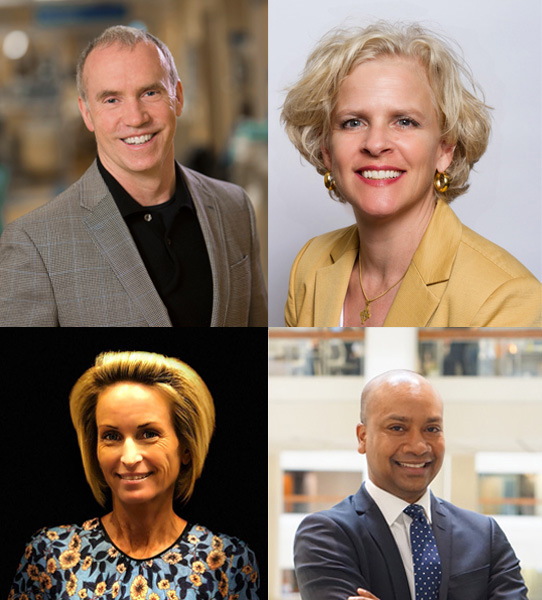
The leadership team of UHN’s Connected COVID Care includes (clockwise from top left) Executive Sponsors: Dr. John Granton, Dr. Heather Ross and Shiran Issacksz; Clinical and Program Sponsors: Dr. Andrea Boggild (pictured), Dr. Sameer Masood, Dr. David Frost, Dr. Robert Wu, Dr. Aman Sidhu, Melissa Chang, Sandra Grgas and Carl Virtanen. (Photos: UHN)
Multi-disciplinary collaboration has been the hallmark of UHN Connected COVID Care from the outset.
The World Health Organization declared COVID-19 a global pandemic on March 11. At UHN, there was a call to action from leadership to shift as much patient care as possible to non-traditional means in preparation for an anticipated surge in coronavirus cases as seen in such places as Italy and New York.
Virtual care offered the solution to avoid unnecessary in-person visits to the hospital and strain on resources such as personal protective equipment, while making use of physicians and other TeamUHN members whose programs were scaled back or were restricted from work due to coronavirus concerns. That required a virtual platform for clinicians to connect with patients – and with each other.
A decision was made to try to leverage technology being developed in the Heart Function Clinic at UHN’s Peter Munk Cardiac Centre (PMCC) to create something that could help virtually monitor patients with COVID-19. As that work was underway, the PMCC team joined forces with Connected Care to broaden the scope beyond clinical care to include such things as patient scheduling, onboarding clinicians, including NPs for continuity of care and social workers to assess disparities among patients, resulting in a more holistic program for patients and clinicians.
UHN Connected COVID Care enrolled its first patients in late April, barely a month after work began on the computer platform, which is the technological centerpiece of the program.
“To launch something like this in a few weeks is unheard of,” says Dr. Yas Moayedi, a cardiologist at the PMCC who helped lead development of the platform. “This is a clear example of how COVID has significantly accelerated disruptive innovation in healthcare.”
The platform pulls all information on the patient together for the clinician in one easy-to-use interface. One template is for the referral process, with the information from it automatically populating the other template, which is for clinical assessment. There are standardized question prompts and each time a clinician speaks with a patient the notes are automatically added into the electronic patient record as a clinic note with the press of a button.
“It’s revolutionary because the platform allows for real time submission of notes, without the need for dictations,” says Dr. Moayedi, noting the streamlined information has made life more efficient for clinicians and patients.

Dr. Yas Moayedi, a cardiologist at the PMCC who helped lead development of the platform, says, “this is a clear example of how COVID has significantly accelerated disruptive innovation in healthcare.” (Photo: Courtesy Yas Moayedi)
Dr. Sameer Masood, a UHN Emergency physician who has been part of the pathway from its earliest stages of development, describes it as “a win-win” for patients and clinicians.
“Patients are extremely happy that they’ve got a follow-up plan,” he says. “And, it closes the care loop for us because we know we’re not going to see a patient back in the ED two or three more times as they monitor their own symptoms.”
Dr. Masood, who pre-pandemic spent a lot of time on innovation and quality improvement in the ED, says one of the keys to the success of UHN’s Connected COVID Care has been the high level of inter-professional collaboration throughout.
“The nature of the virus and the speed things were changing has led to a lot more information sharing across all these specialties than would happen historically,” he says.
And, like other members of the team, Dr. Masood says the lessons learned through Connected COVID Care will inform other innovation in virtual patient care, which will be a lasting impact of the pandemic.
“COVID has pushed a lot of healthcare into the modern era and digitized it and that’s not going to change,” says Dr. Masood.
Dr. Andrea Boggild, Medical Director for the virtual clinic, attributes much of the success to a commitment to excellence and collaboration across the team.
“The question that underpins our iterative effort is, ‘what would great look like today?'” she says. “Not six months from now, but today. From planning to implementation and ongoing improvement, we focused on delivering the safest, highest quality, and most equitable virtual care experience.”
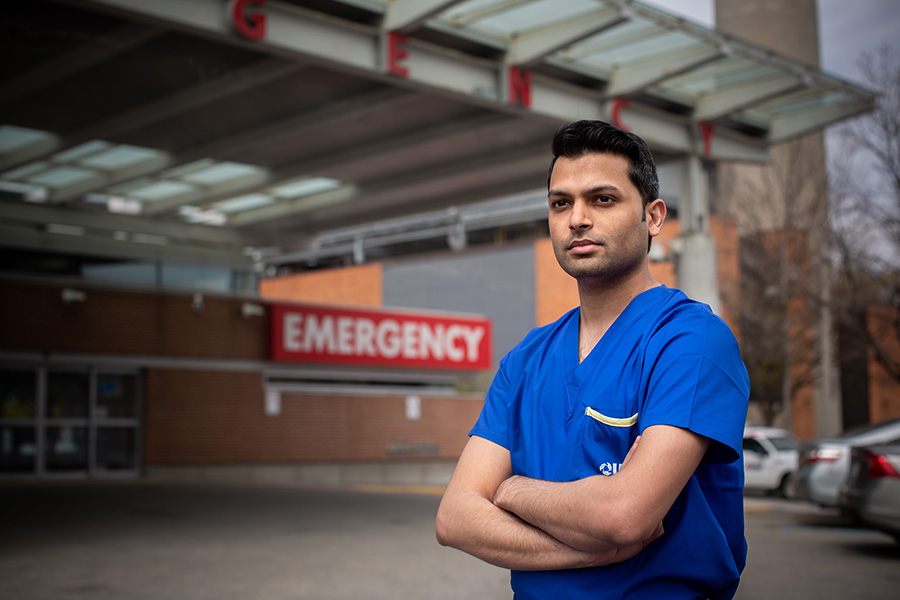
UHN Emergency physician Dr. Sameer Masood describes Connected COVID Care as “a win-win” for patients and clinicians. (Photo: Johnny Guatto, University of Toronto Communications)
Dr. Boggild adds that the pathway has “capitalized on the collective team strengths and expertise, and didn’t waste a single second on anything that was not about offering solutions. We were able to do this because of strong leadership, a team culture to grant grace and latitude to one another, and the recognition of continuous quality improvement as a normative standard.
“Having a diversity of opinions, expertise, and lived experience around the table led to greater creativity, innovation, critical analysis, and strength of solutions,” she says. “By valuing the thoughts and opinions of all team members equally and seeing every barrier as an opportunity for improvement, we cultivated an environment that celebrated iteration, refinement, and change.
“One of our team’s greatest strengths, in fact, is our ability to nimbly pivot energies and resources to where they are most needed as the pandemic evolves.”
Nikki, who has resumed some of her typical duties with transplant patients while continuing Connected COVID Care work, credits the integrated care approach “for setting an amazing tone” by encouraging everyone to feel empowered to push for changes to improve the program.
Nikki points to such things as the involvement of UHN Patient Experience, myUHN Patient Portal and Toronto Public Health teams in providing input for all patient documentation, and involvement of clinicians and admins to make modifications to clinic workflow, processes and the application.
“It’s been a real-life example of workflow improvement and quality improvement on the fly,” she says.
Meanwhile, a little more than two months after testing positive for COVID-19, Gus Kandelas’ ribs are still healing from his fall, but any symptoms of the coronavirus have long since passed. He never needed to return to the hospital after the initial ED visit, and his daughter, Sophie, offers praise for the UHN care.
“I’m very happy with the way things went,” she says. “Our story has a happy ending.”
To learn more about Patient Experience, visit our More programs page.

